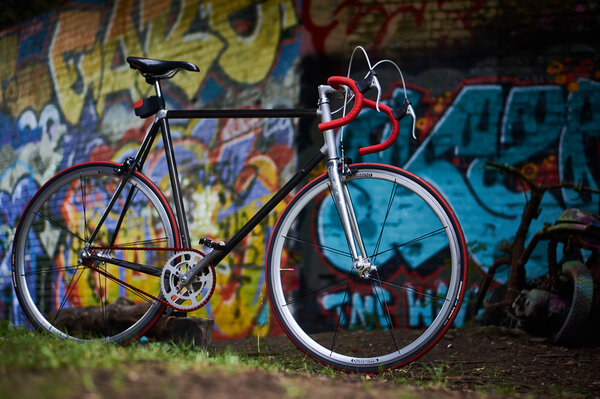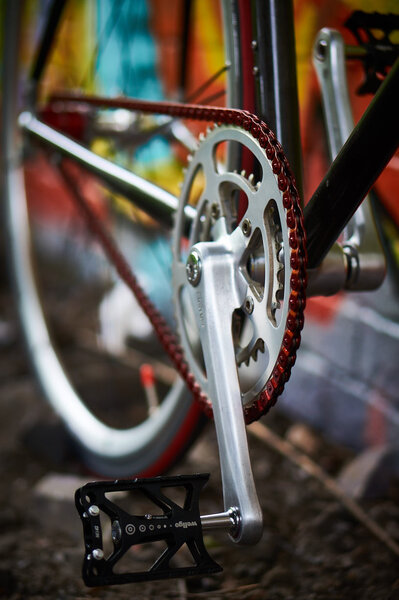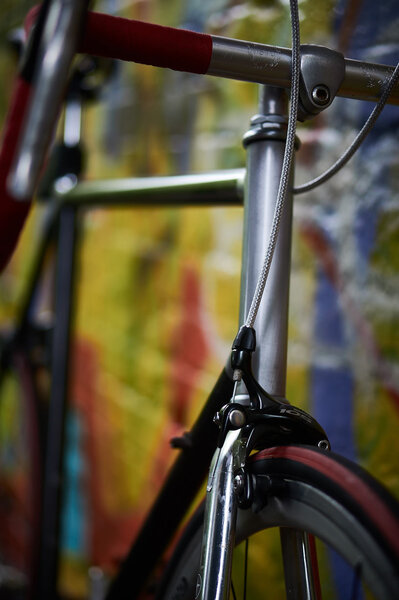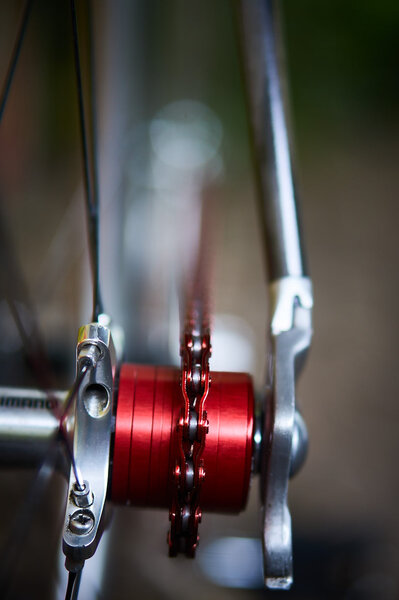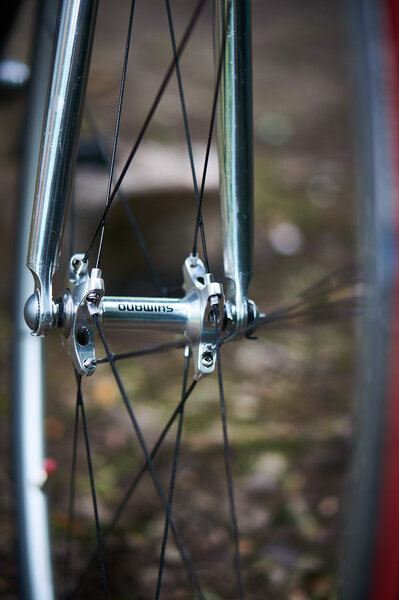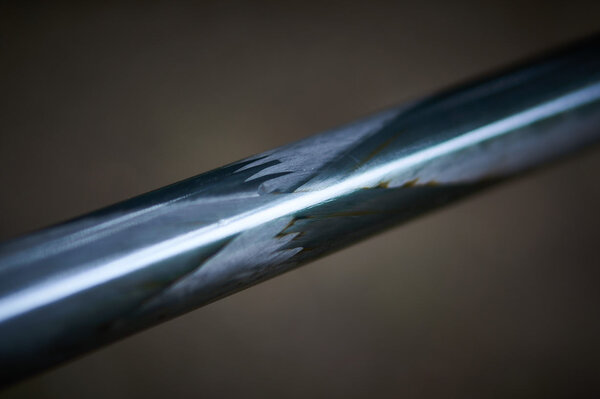My new city hack  :
:
I finally managed to get together all the bits for my Vitus FCK9 singlespeed conversion, and I reckon its gone pretty well! The chain is a little crackly sometimes, which I guess is a tension/alignment issue. One that I'll have to live with when the dropouts are almost vertical... Unless i get one of those ugly tensioners :?
Total cost of the build was about £250 (a fair few of the parts came from free donor bikes)
Full details are below, what do people think?
Frame: Vitus FCK9 Carbon Kevlar
Fork: Schwinn Alloy
Headset: Tange Seiki Threaded 30.3mm Stack
Stem: SunRace Quill
Handlebar: Tange Road Champion
Bar Tape: Velox Cotton Red
Brake Levers/Brifters: Shimano 600
Brake Calipers: Shimano 105
Brake Pads: Shimano 105
Brake Cables: Jagwire Braided
Cassette: 14T
Chain: Gusset Slink Half-link Red
Cranks: SunRace 50T/30T Double
Pedals: Wellgo M142
Wheelset: Shimano Ultegra WH-6500
Tyres: Schwalbe Lugano 700x23C Red Stripe
Tubes: Continental Race 28
Saddle: Kona Race
Seatpost: Peugeot 23.0mm
Extras: Knog Strongman Lock/Bracket
Weight: 8.5KG (Excl. lock)
I finally managed to get together all the bits for my Vitus FCK9 singlespeed conversion, and I reckon its gone pretty well! The chain is a little crackly sometimes, which I guess is a tension/alignment issue. One that I'll have to live with when the dropouts are almost vertical... Unless i get one of those ugly tensioners :?
Total cost of the build was about £250 (a fair few of the parts came from free donor bikes)
Full details are below, what do people think?
Frame: Vitus FCK9 Carbon Kevlar
Fork: Schwinn Alloy
Headset: Tange Seiki Threaded 30.3mm Stack
Stem: SunRace Quill
Handlebar: Tange Road Champion
Bar Tape: Velox Cotton Red
Brake Levers/Brifters: Shimano 600
Brake Calipers: Shimano 105
Brake Pads: Shimano 105
Brake Cables: Jagwire Braided
Cassette: 14T
Chain: Gusset Slink Half-link Red
Cranks: SunRace 50T/30T Double
Pedals: Wellgo M142
Wheelset: Shimano Ultegra WH-6500
Tyres: Schwalbe Lugano 700x23C Red Stripe
Tubes: Continental Race 28
Saddle: Kona Race
Seatpost: Peugeot 23.0mm
Extras: Knog Strongman Lock/Bracket
Weight: 8.5KG (Excl. lock)
